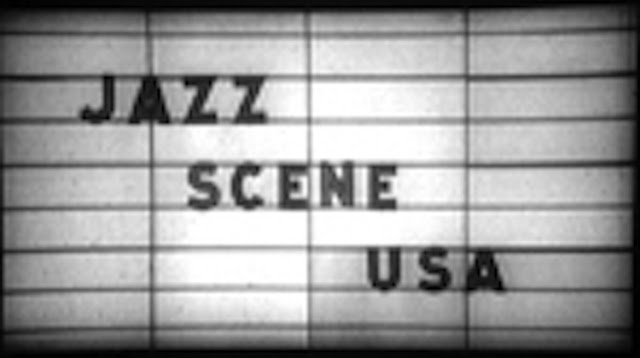JAZZ SCENE U.S.A. #17
I am in the process of moving my work on this platform to a new home that unites all of my jazz research under one roof. Thank you for looking at my work here at google blogger. I think you will find the new home more user friendly with links and tags to all of my research. This link will take you to this research at the new site where I have updated the links to Jazz Scene USA segments on YouTube.
MONDAY, OCTOBER 15, 1962
CBS TELEVISION CITY, LOS ANGELES, CA
Commentary © James A. Harrod, Copyright Protected; All Rights Reserved
Anita O’Day was scheduled to appear on Jazz Scene USA on the seventeenth show that was to be taped on October 15, 1962. Miss O’Day had signed a contract and everything was set to go including a fully developed script, jazz trio contracted to accompany her with a set list of songs to be performed.
But Anita O’Day was in New York recording an album for Norman Granz. The recording session encountered some difficulties requiring O’Day to remain in New York. The producers were put in a very difficult position and made the decision to substitute Lou Rawls who graciously agreed to assist and fill the slot left vacant by Miss O’Day. It was a fortunate turn of events for Lou Rawls who was a rising star in the music world.
Anita O'Day And The Three Sounds:
Roy Eldridge (tp-1) added, Gene Harris (p) Andy Simpkins (b) Bill Dowdy (d) Anita O'Day (vcl)
New York, October 12, 13, 14 & 15, 1962
62VK682 All too soon (aod vcl) Verve V-8514
62VK683 You and the night and the music (aod vcl,1)
62VK684 Let me off uptown (aod vcl?,1?)
62VK685 Fly me to the moon [In other words] (aod vcl)
62VK686 When the world was young (aod vcl)]
62VK687 My ship (aod vcl) Verve V-8514
62VK688 Whisper not (aod vcl)
Note: Verve V-8514(mono) = V6-8514(stereo), both titled "Anita O'Day and the Three Sounds"
Rawls was born on December 1, 1933 in Chicago and raised by his grandmother in the Ida B. Wells projects on the city's South Side. He began singing in the Greater Mount Olive Baptist Church choir at the age of seven and later sang with local groups through which he met future music stars Sam Cooke, who was nearly three years older than Rawls, and Curtis Mayfield.
After graduating from Chicago's Dunbar Vocational High School, he sang briefly with Cooke in the Teenage Kings of Harmony, a local gospel group, and then with the Holy Wonders. In 1951, Rawls replaced Cooke in the Highway QC's after Cooke departed to join The Soul Stirrers in Los Angeles. Rawls was soon recruited by the Chosen Gospel Singers and himself moved to Los Angeles, where he subsequently joined the Pilgrim Travelers.
In 1955, Rawls enlisted in the U.S. Army as a paratrooper in the 82nd Airborne Division. He left the "All-Americans" three years later as a sergeant and rejoined the Pilgrim Travelers (then known as the Travelers). In 1958, while touring the South with the Travelers and Sam Cooke, Rawls was in a serious car crash. Rawls was pronounced dead before arriving at the hospital, where he stayed in a coma for five and a half days. It took him months to regain his memory, and a year to fully recuperate. Rawls considered the event to be life-changing.
Alongside Dick Clark as master of ceremonies, Rawls was recovered enough by 1959 to be able to perform at the Hollywood Bowl. He was signed to Capitol Records in 1962, the same year he sang the soulful background vocals on the Sam Cooke recording of "Bring It On Home to Me" and "That's Where It's At," both written by Cooke. Rawls' first Capitol solo release was Stormy Monday (a.k.a. I'd Rather Drink Muddy Water), a jazz album, in 1962.
Biographical details from the Wikipedia entry for Lou Rawls.
Lou Rawls sings IN THE EVENING WHEN THE SUN GOES DOWN, STORMY MONDAY, GOD BLESS THE CHILD and I’D RATHER DRINK MUDDY WATER accompanied by Dick Palombi (piano), Chuck Metcalf (bass) and Bill Richardson (drums). The jazz trio also performs SHERRILL or CHERYL.
Production credits: Host: Oscar Brown, Jr.
Executive Producer: Steve Allen
Producer: Jimmie Baker
Director: Steve Binder
Associate Producer: Penny Stewart
Associate Director: George Turpin
Technical Director: Jim Brady
Lighting Director: Leard Davis
Audio: Larry Eaton
Art Director: Robert Tyler Lee
Jazz Consultant: John Tynan
Title Films: Grant Velie
Cameras: Bob Dunn, Ed Chaney, Gorman Erickson, Pat Kenny













































